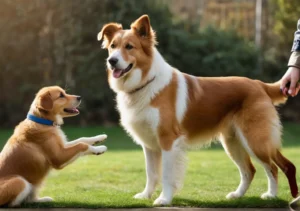Cats are fascinating creatures, known for their grace, agility, and independence. Have you ever wondered why these beloved animals are referred to as felines?
Cats are called feline due to their classification in the animal kingdom. They belong to the Felidae family, which includes all domestic and wild cats. This term originates from the Latin word “felinus,” which means cat-like.
The Etymology of Feline
Have you ever wondered why cats are called “feline”? The word “feline” actually comes from the Latin word “felis,” which means cat. This term has been passed down through different languages over centuries, eventually evolving into the English word we use today.
Feline is a fitting term for our furry friends as it encompasses their predatory nature and agility. From their sharp claws to their keen hunting instincts, cats embody the essence of being feline. This word not only describes their physical attributes but also their independent and mysterious demeanor that we all know and love.
Feline Characteristics
Cats possess a unique set of characteristics that make them stand out as feline creatures. Their sleek bodies, retractable claws, and keen senses are all traits that have evolved over thousands of years to help them thrive in various environments.
In addition to their physical features, cats exhibit distinct behaviors that are typical of felines. Purring, kneading, and hunting are all behaviors that are deeply rooted in their feline ancestry. These behaviors not only serve practical purposes but also contribute to their overall charm and appeal as beloved pets.
- Agility: Cats are known for their incredible agility, able to twist and turn in midair with grace and precision.
- Curiosity: One of the defining traits of felines is their insatiable curiosity, always eager to explore their surroundings.
- Independence: Cats have a strong sense of independence, choosing when they want affection and when they prefer solitude.
- Flexibility: Their flexible bodies allow cats to squeeze into tight spaces and contort themselves in ways that seem almost impossible.
Whether it’s their etymology or their unique characteristics, cats truly embody what it means to be feline. So the next time you look at your furry feline friend, remember the rich history and traits that make them the fascinating creatures they are.
Evolutionary History of Felines
Felines, including domestic cats and big cats like lions and tigers, are called felines because of their shared ancestry and evolutionary journey. These graceful creatures belong to the taxonomic family Felidae, which is why they are referred to as felines. This family tree dates back millions of years, with ancient felines evolving into the diverse species we see today. From the sleek house cat lounging on your couch to the majestic lion prowling the savannah, all these animals are connected through their feline lineage. So, the next time you marvel at a cat’s agility or a lion’s roar, remember it’s all in the feline family.
Different Types of Felines
Beyond our beloved house cats, the feline family encompasses a wide range of species, including some of the most iconic big cats on the planet. From the stealthy cheetah to the powerful tiger and the regal lion, each of these majestic creatures falls under the feline umbrella. Interestingly, these big cats share many traits with our domestic feline friends, from their retractable claws to their whiskers designed for sensory purposes. So, whether you’re admiring a lion’s mane or a cheetah’s speed, remember that they are all part of the diverse and fascinating world of felines.
Types of Felines:
- Lion
- Tiger
- Cheetah
- Leopard
- Jaguar
- Snow Leopard
- Cougar
- Lynx
Remember, each of these feline species plays a vital role in their respective ecosystems, showcasing the beauty and complexity of the feline family.
Cultural Significance of Felines
Throughout history, cats have held a special place in various civilizations around the world, symbolizing different qualities and characteristics. In ancient Egypt, they were revered and even worshipped as symbols of grace, power, and protection. In Japanese culture, the beckoning cat or “Maneki-neko” is believed to bring good luck and fortune to its owner. Even in Norse mythology, the goddess Freyja was often depicted with cats symbolizing fertility and abundance. These examples showcase the diverse cultural significance of felines and why they have been called so.
Feline Mythology and Folklore
From ancient tales of shape-shifting cats in Celtic folklore to the mystical nine lives of cats in European mythology, felines have always captivated the human imagination. In Japan, the “Bakeneko” is a mythical cat with supernatural abilities, while in Native American folklore, cats are seen as guardians of the spiritual world. Cats appear in folklore worldwide, each culture attributing different qualities and powers to these graceful creatures. This rich tapestry of myths and legends adds to the allure of why cats are called feline.
Additional Unique Insight:
– In Norse mythology, the goddess Freyja is not only associated with cats but also rides a chariot pulled by two large cats. This unique portrayal further emphasizes the deep-rooted connection between felines and ancient beliefs, highlighting their mystique and importance in various cultures.
Feline as Pets
Cats are often referred to as felines, a term that originates from the Latin word “felis,” meaning cat. These graceful and independent creatures have earned this title due to their unique characteristics that set them apart from other animals. One of the reasons why cats make popular pets is their playful and curious nature, which adds a lively and entertaining presence to any home. Additionally, their grooming habits and self-sufficiency make them relatively low maintenance compared to other pets, making them ideal companions for busy individuals.
Furthermore, cats have a strong sense of loyalty and affection towards their owners, forming close bonds that provide companionship and comfort. Their purring is not only soothing but also serves as a form of communication, indicating contentment and happiness. Felines are also highly adaptable and can thrive in various living environments, from small apartments to spacious houses, making them suitable for a wide range of lifestyles.
When considering a feline companion, it is essential to ensure proper care, including regular veterinary check-ups, a balanced diet, and a stimulating environment to keep them healthy and happy. By understanding and respecting their unique needs as felines, we can foster a rewarding and fulfilling relationship with these captivating creatures.
Conservation Efforts for Felines
Wild feline species play a crucial role in maintaining the delicate balance of ecosystems around the world. From the majestic tiger to the elusive snow leopard, these animals are vital to the health and biodiversity of their habitats. However, many feline species face threats such as habitat loss, poaching, and human-wildlife conflict, putting them at risk of extinction.
Conservation initiatives are essential to protect these iconic animals and ensure their survival for future generations. Organizations and wildlife experts work tirelessly to implement strategies such as habitat preservation, anti-poaching efforts, and community education to safeguard feline populations. By raising awareness and advocating for the conservation of feline species, we can contribute to the preservation of these magnificent creatures and the ecosystems they inhabit.
In addition to supporting conservation efforts financially, individuals can also make a difference by practicing responsible tourism, avoiding products made from endangered feline species, and spreading awareness about the importance of protecting wildlife. Together, we can help secure a bright future for felines and ensure that they continue to roam the earth for years to come.
Interesting Facts about Felines
Did you know that the term “feline” actually comes from the Latin word “felis,” which means cat? This is why cats are often referred to as felines in scientific contexts. But beyond etymology, there are plenty of fascinating facts about these amazing creatures: – Cats have flexible bodies: A cat’s spine can rotate more than the spine of most other animals, allowing them to twist and turn with incredible agility. – Unique communication: Cats communicate through a wide range of vocalizations, body language, and even through their tails. Each cat has its own distinct way of communicating with their human companions. – Ancient companions: Cats have been domesticated for over 4,000 years, making them one of the oldest companion animals in history. – Natural hunters: Cats are skilled predators with sharp claws and teeth, honed over centuries of evolution for hunting small prey. – Mysterious behavior: Cats are known for their enigmatic behavior, from kneading their paws to sleeping in strange places, keeping us forever intrigued by their mysterious ways.
Feline Health and Care
When it comes to caring for your feline companions, it’s essential to prioritize their health and well-being. Here are some practical tips to ensure your cat stays happy and healthy: – Regular vet check-ups: Schedule annual check-ups with your veterinarian to monitor your cat’s health and catch any potential issues early. – Nutritious diet: Feed your cat a balanced diet of high-quality cat food to ensure they are getting the nutrients they need. – Hydration is key: Always provide fresh water for your cat to drink, as proper hydration is essential for their overall health. – Regular exercise: Engage your cat in playtime and provide opportunities for them to exercise, keeping them mentally and physically stimulated. – Grooming routine: Regular brushing and grooming will help keep your cat’s coat healthy and reduce the risk of hairballs. – Safe environment: Create a safe indoor environment for your cat, minimizing potential hazards and providing plenty of enrichment to keep them entertained.
By understanding the origins of the term “feline,” learning interesting facts about cats, and taking proactive steps to care for these incredible creatures, you can deepen your bond with your feline companions and ensure they live their best lives.
Alex, a passionate animal lover, has experience in training and understanding animal behavior. As a proud pet parent to two dogs and three cats, he founded AnimalReport.net to share insights from animal experts and expand his knowledge of the animal kingdom.




